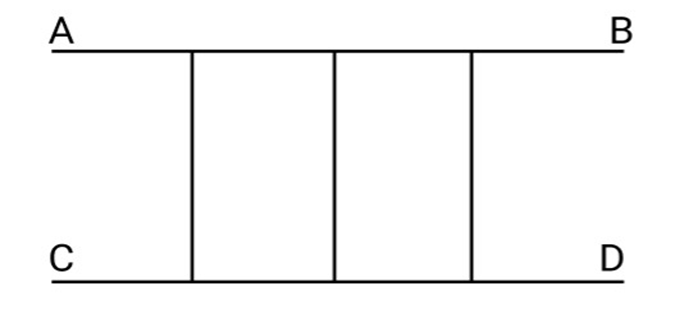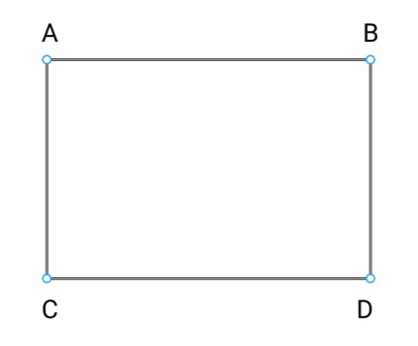Important Questions for CBSE Class 9 Maths Chapter 5 Introduction to Euclid’s Geometry: FREE PDF Download
FAQs on CBSE Class 9 Maths Important Questions - Chapter 5 Introduction to Euclid’s Geometry
1. What are the important topics covered in Chapter 5 of Class 9 Maths?
Chapter 5 ‘Introduction to Euclid’s Geometry’ of Class 9 Maths is a very short chapter. Hence, all the topics covered in this chapter hold equal importance when preparing for your Class 9 Maths exams. However, an important tip to keep in mind during your preparation is to practice and remember well all the axioms and postulates that are a part of this chapter. Students can refer to Important Questions for CBSE Class 9 Maths Chapter 5 provided by Vedantu for more help.
2. What is Euclid's Geometry according to Chapter 5 of Class 9 Maths?
Euclid’s geometry refers to the study of solid figures and planes based on the axioms and postulates given by Euclid, a Greek Mathematician. His postulates and axioms deal with the properties and relationships between all things. Euclid’s geometrical theorems have been given a lot of importance since they enable one to calculate various distances. An example of his postulates can be “A straight line may be drawn from any one point to any other point”.
3. Where can I find a list of important questions from Chapter 5 of Class 9 Maths?
Important Questions are a very important source for preparation before your Maths exam. Maths can often be a difficult subject to excel in for many students. Referring to important questions will give students an opportunity to score better in their exams. You can find Important Questions from Chapter 5 of Class 9 Maths provided by subject experts at Vedantu. These questions have been solved with step-by-step solutions to help students understand the chapter better and the solutions or any study material is available for downloading absolutely free of cost.
4. How many exercises are a part of Chapter 5 of Class 9 Maths?
Chapter 5 “Introduction to Euclid’s Geometry” of Class 9 Maths NCERT is a very short chapter and includes a total of 1 exercise. The following is a list of total questions in each exercise of this chapter:
Exercise 5.1 - 7 questions
The exercise in this chapter covers topics including Euclid’s Definitions, Axioms, and Postulates.
5. How are important questions helpful from exam point of view for Class 9 Maths Chapter 5?
Important questions are meant to help students by providing ready-made study material that can help them save time during their preparation. The important questions for Chapter 5 Class 9 Maths provided by Vedantu have been solved by subject experts to give students a thorough understanding of the steps involved in answering the questions from this chapter. The solutions for these questions have been carefully crafted to provide full accuracy. Students can download these solutions free of cost on their computers and access them anytime while they are preparing for exams.
6. Why is Euclid’s Geometry important in Class 9 Maths?
Euclid’s Geometry forms the foundation of classical geometry. Understanding axioms, postulates, and their applications help build problem-solving skills in geometrical concepts.
7. How can I effectively study Chapter 5 of Class 9 Maths?
Focus on understanding Euclid's definitions, axioms, and postulates. Practice problems from the NCERT exercises and solve important questions to strengthen your understanding.
8. What is the difference between an axiom and a postulate in Euclid's Geometry?
Axioms are universal truths accepted without proof and are applicable across mathematics, while postulates are specific assumptions related to geometry.
9. How can solving important questions improve my performance in Chapter 5 of Class 9 Maths?
Solving important questions enhances understanding, builds confidence, and helps in better retention of concepts. It also prepares students for similar problems in exams.
10. What types of questions can I expect from Chapter 5 in exams?
Questions typically include defining terms, proving properties based on axioms and postulates, and solving problems involving Euclid's definitions and theorems.
11. Can I score full marks in Chapter 5 by solving only important questions?
While important questions cover key concepts, studying the entire chapter and practising all exercises ensures a comprehensive understanding and better exam performance.
12. How is Euclid’s Geometry used in real-life applications?
Euclid's Geometry is used in fields like architecture, engineering, and computer graphics to calculate distances, construct shapes, and design objects with precision.
13. Are there any common mistakes to avoid in Chapter 5 of Class 9 Maths?
Common mistakes include misunderstanding the difference between axioms and postulates, incorrectly interpreting definitions, and failing to justify answers using axioms or postulates.
14. How does Chapter 5 prepare students for advanced geometry in higher classes?
This chapter introduces the fundamental principles of geometry, which are essential for studying advanced topics like coordinate geometry, trigonometry, and calculus in higher classes.






















































